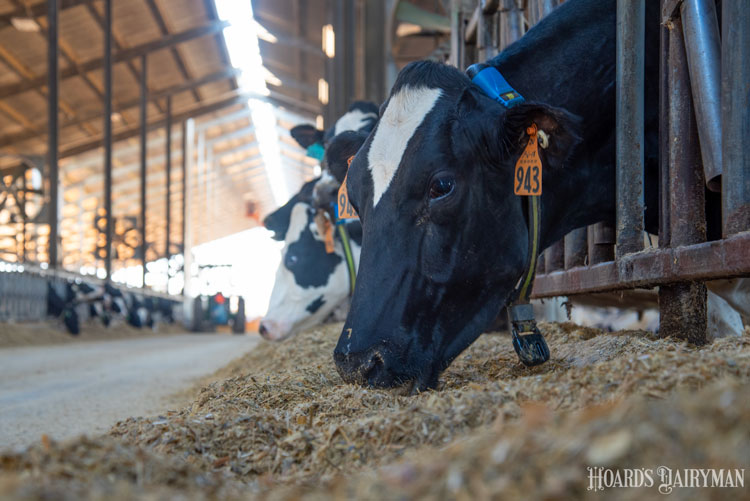
The next time you walk through the barn, try to take notice of that one “gold star” cow that just always seems to do what it’s supposed to. It’s a cow that transitions well, peaks higher than its herdmates, and breeds back in a timely fashion, even while being small in frame. Often, we’re hyper focused on the “problem children” of the herd and fail to give credit where credit is due — until now. Wisconsin researchers have taken a great interest in understanding what impacts the efficiency of a cow.
The rumen houses millions of microorganisms living symbiotically with the cow to unlock energy from feed to support maintenance and lactation. How efficiently these nutrients are unlocked through fermentation helps determine the profit potential of the cow relative to its herdmates. With feed cost often being the highest cost of production, this is an important topic for all dairy farm operators focused on the bottom line.
Guillermo Martinez Boggio, an animal geneticist in the department of animal and dairy sciences at the University of Wisconsin-Madison, tracked data in two research herds located in Canada and Florida and recently released the results in the Journal of Dairy Science. His goal was to better understand the relationship between the cow and its rumen microbiome on the efficiency of transforming feed into milk.
“If we focus on the rumen microbiome, we can have a biological insight into the metabolism in the cow,” described Martinez Boggio on the “Dairy Science Digest” podcast. “There are different microorganisms — bacteria, archaea, protozoa, and fungi — creating a community as they interact with each other in the rumen. The most representative bacteria were the same regardless if the cow was eating a total mixed ration (TMR) in Florida or Canada.”
Subtle differences in the rumen hold the opportunity to unlock the future of dairy cattle nutrition.
Energy saved
Carbon is the chemical unit of energy. Efficiency is the visual indicator of retained carbon in the cow’s system to create more meat or milk than cows that lose carbon through expelling gas as methane.
“Consider methane as an energy loss for the cow,” Martinez Boggio said. “Methane reduction research benefits the dairy industry two-fold, improving energy use while achieving reductions in a known contributor to global warming.”
Is the rumen microbiome contributing to the cow’s feed efficiency? To answer that question, researchers compared three models: the cow genome; the cow genome plus rumen microbiome; and the cow genome, the rumen microbiome, and its interaction (better known as “holobiont”). “When we included the rumen microbiome in the models, it best predicted the main feed efficiency traits such as dry matter intake, milk energy, and residual feed intake,” said Martinez Boggio.
However, just because a cow has an efficient rumen microbiome doesn’t mean its offspring will, too. Much more research is needed to use this as a trait for sire selection.
Next research
Collecting rumen fluid is not a simple task. The research team is attempting to find a proxy measurement, such as saliva or feces, that is easier to collect yet still correlates to the microorganism population they find in the rumen. This would allow access to a much larger sample database across commercial herds to strengthen the reliability and confidence around the data.
The rumen microbiome can be used to obtain more reliable breeding values that contribute to animal selection. For that, we need to identify which microorganisms can contribute to animal selection and also help the industry identify bacteria that are mostly impacted by the environment, pointing nutritionists to supplement additives to block methane production at the source when appropriate.
The dairy industry is committed to working toward the sustainability mission while continuing to improve production. These are just a few steps in the right direction.
These findings were summarized in a peer-reviewed open access Journal of Dairy Science article found at www.journalofdairyscience.org. To learn more, listen in to the monthly podcast “Dairy Science Digest” on your favorite podcast platform.







